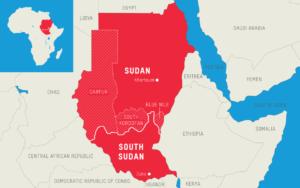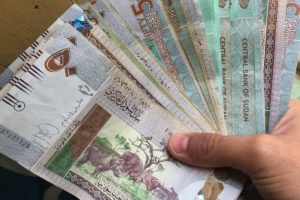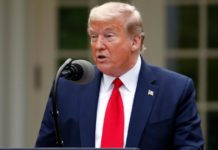Since the beginning of 2019, the countries of Sudan and South Sudan have been in a state of turmoil. Sudan has been seeing waves of nonviolent popular protests leading to the stepping down of its prime minister, Omar Al Bashir after nearly thirty years of rule. The protests have been met with massive reprisal and the country’s future still is in doubt. South Sudan, Africa’s youngest country, maybe caught in a year of famine where an estimated 60% of the population is vulnerable to food shortage. In this three-part essay, we look at the historical and political factors responsible for these crises.

Sudan was colonized by the British as part of their plan to hold a strip of African land, going from Cairo, Egypt to Cape town, South Africa. Historically South Sudan and North Sudan were culturally distinct. North Sudan was more Arabic speaking with majority Muslim, constituting nearly 97% of the population. South Sudan had a more diverse set of languages spoken commonly and their religious practices were more a mix of Christianity and indigenous religions. When Sudan gained independence, following Egypt’s independence from Britain, the state was still quite divided. The British mostly recruited their military personnel from North Sudan leading to a strong association of Military rule, with North dominance and Islamic rule. Much of Sudan’s post-colonial history has been marked by tensions that have led to oscillations between democratic governments and military coups, which have been changed owing to a combination of popular movements and realignments in the military.
 Sudan was in a politically and economically precarious situation in the 1980s for two reasons. The IMF became a growing power in Africa and the end of the Cold War marked an increase in international arms trade. IMF orchestrated restructuring made the economy vulnerable, and this was marked by famines and unstable economy. The restructuring came at the end of the Cold war, where arms dealers had to look for new markets following the reduction of tensions from the Cold War. African became a new market, with Sudan being a prime target for sales. This led to Sudan becoming a centre of the arms trade, contributing to violent conflicts erupting all across the country with state and non-state actors committing massive atrocities.
Sudan was in a politically and economically precarious situation in the 1980s for two reasons. The IMF became a growing power in Africa and the end of the Cold War marked an increase in international arms trade. IMF orchestrated restructuring made the economy vulnerable, and this was marked by famines and unstable economy. The restructuring came at the end of the Cold war, where arms dealers had to look for new markets following the reduction of tensions from the Cold War. African became a new market, with Sudan being a prime target for sales. This led to Sudan becoming a centre of the arms trade, contributing to violent conflicts erupting all across the country with state and non-state actors committing massive atrocities.
In 1989, Omar Al-Bashir, a military colonel and founder of the National Congress Party, overthrew the previous coalition government, who was led by Sadiq Al- Mahdi, who was already losing power owing to a Civil War at the time. Bashir held power for almost 30 years, but had to maintain a balance between the forces of war and conflict on all sides. It was only in 2005, when there was a declaration of peace. That declaration ended with an agreement that South Sudan could declare independence after 5 years.
In 2011, a UN monitored referendum was held, where the South Sudanese people opted to secede from the rest of Sudan. Significantly, this election was seen as one of the first times in history that a formerly colonized people could change their own national boundaries through a democratic process.
Around the same time, inspired by the Arab Spring, protests against Bashir erupted that year. Unlike the other protests in the Middle East, popular movements in Sudan have led to the fall of unpopular governments, as in the case of the 1960s and 1980s. Protests complained that Bashir was a stooge of the IMF and had problems with the austerity measures that he implemented on their behalf.
When South Sudan seceded, the remaining country of Sudan found itself in economic hardship as it lost billions of dollars in oil revenues from South Sudan as about three fourth of Sudan’s oil fields was in the South. South Sudan inherited many problems from the earlier historical phase as well. Over 30 lakh weapons are in South Sudan, with at least 20 lakhs in the hands of non-state groups and individuals leading to political instability in South Sudan.
 After the succession of South Sudan, the Sudanese government found itself in a vulnerable situation. As the country had defaulted its debt, the IMF devalued its currency. The IMF have imposed a series of measures against Sudan calling it as defaulter country, and its measures have made Sudan vulnerable to the international arms trade as well. In the 1990s, 2.7 Sudan Pounds equalled one US Dollar, and remained relatively stable until 2011 when massive devaluation occurred. By 2017 it had reached 7 pounds to the dollar, and in 2018 it was 28 Pounds to the dollar, and in 2019, 40 Pounds to the dollar. The economic changes that Sudan had to implement to manage the IMF and the related debt that it has incurred will continue to be a challenge for the people of Sudan.
After the succession of South Sudan, the Sudanese government found itself in a vulnerable situation. As the country had defaulted its debt, the IMF devalued its currency. The IMF have imposed a series of measures against Sudan calling it as defaulter country, and its measures have made Sudan vulnerable to the international arms trade as well. In the 1990s, 2.7 Sudan Pounds equalled one US Dollar, and remained relatively stable until 2011 when massive devaluation occurred. By 2017 it had reached 7 pounds to the dollar, and in 2018 it was 28 Pounds to the dollar, and in 2019, 40 Pounds to the dollar. The economic changes that Sudan had to implement to manage the IMF and the related debt that it has incurred will continue to be a challenge for the people of Sudan.
Since the separation of Sudan into South and the remaining parts of Sudan, massive political and economic strife has marked the South, while developing political movements have marked the north. The structural features of post-colonial borders, neoliberal globalization and international arms deal continue to place challenges to the Sudanese people.
The writer is a mathematician and political observer.



























